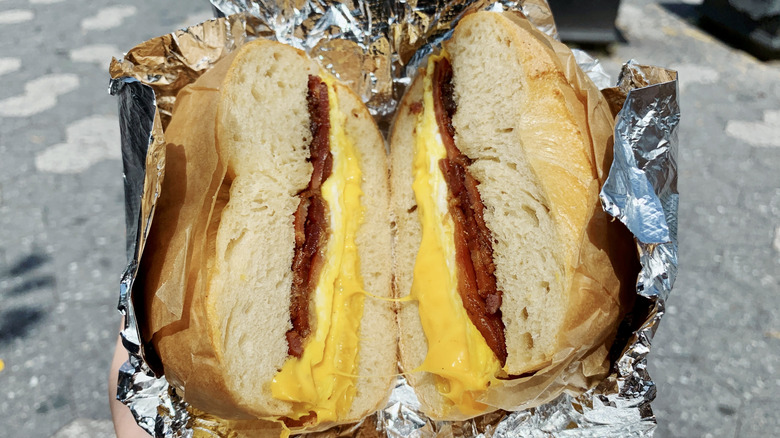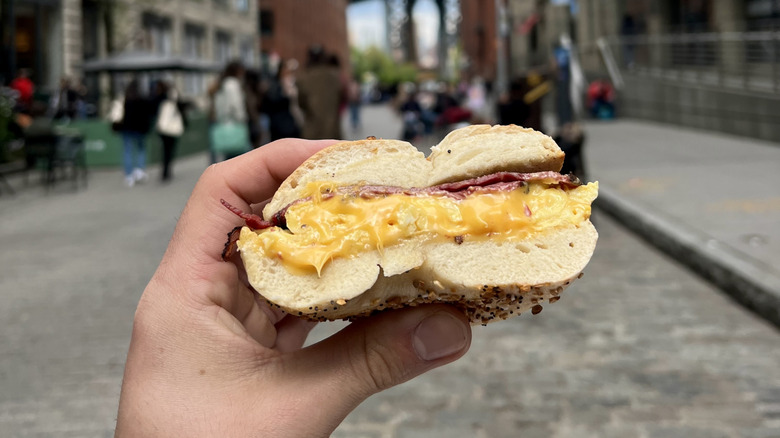The Complete History NYC's Iconic Bacon, Egg, And Cheese Breakfast Sandwich
They say breakfast is the most important meal of the day, and if you've ever lived in or been to New York City, you've almost certainly fueled your body with a flavorful bacon, egg, and cheese sandwich. This classic breakfast sandwich's true origins are a little murky, but over the years, it has become a New York staple.
The breakfast sandwich concept might have started in London during the Industrial Revolution in the 1800s. Eggs, sausage, bacon, and sometimes sausage grease were paired on a bap (or Scottish roll); street vendors would sell the sandwiches to consumers for a quick and easy breakfast. In the United States, the Denver sandwich, which was allegedly invented by Chinese immigrants as a quick and easy dish similar to egg foo young, came about at around the same time, so it's hard to say exactly which one had more influence. Breakfast sandwiches were on the rise in the 19th century, but the popularity surrounding the bacon, egg, and cheese in New York City might have happened during the mid-1900s as the first fast food breakfast sandwiches became popular.
What sets the New York City sandwich apart from the rest?
The bacon, egg, and cheese sandwich certainly isn't exclusive to New York City, but it's been ingrained into New York's breakfast culture for years. There isn't actually much in terms of main ingredients — bacon, eggs, and processed cheese — that sets this sandwich apart from other variations, with the exception of the New York bagel or poppy roll it's usually served on.
There is some variation in how this sandwich is ordered. Most people head to their local deli or bodega and order it pretty quickly. It's pronounced as one long baconeggandcheese. To enjoy it like a local, make sure you add salt, pepper, and ketchup — say that as all one word, too.
The sandwich is usually cut in half, wrapped in tin foil or deli paper (the perfect bacon, egg, and cheese wrapper) to prevent drippage, and handed right over the counter. Don't expect it to come in a fancy brown bag for easy transport, and listen for your name when it's called. If you've ever been to a New York City deli on a Saturday morning, then you know at least half the customers have ordered the same thing.

